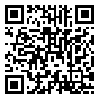BibTeX | RIS | EndNote | Medlars | ProCite | Reference Manager | RefWorks
Send citation to:
URL: http://jha.iums.ac.ir/article-1-183-en.html
Introduction: To take informed consent for treatment is one of the essential rights of each patient. All healthcare centers must complete consent forms. In spite importance to get informed consent forms, there isn't adequate paying attention to complete these forms. This research is aimed to review the completeness of consent forms in IUMS's teaching centers.
Methods: In a descriptive, cross-sectional research we reviewed the completeness of consent forms using a questionnaire. We selected 330 consent forms of inpatient patients in treatment-teaching centers from IUMS by a stratified random sampling method. Data were collected through observations and consent forms survey. In order to providing information we used descriptive statistics by SPSS.
Results: Our findings showed that there were incompleteness for patient's family and first names in informed consents forms in 7.2% (24 patients), and for of patient's addresses 71.5% (234 patients). There weren't any sign or finger print in 1.2% (4) forms. In 5.4% (18) forms was bad handwriting. 2.4% (8 patients) patients didn't have legal age while they singed form consent, and 3.6% (12 patients) forms singed by consanguinity and casual relatives. In emergency conditions there were for 86.6% (74 patients) family name and first name recorded while in non emergency conditions 94.7% (235 patients) were recorded. Also forms were confirmed by witnesses in 77.6% (66 patients) in emergency cases while in non- emergency cases it was 59.9% (147 patients). It was applied another form as acquaintance (exemption) in 96.1% (76patients).
Conclusion: Goal of getting consent forms is providing the best decision-making for patients. Because importance of getting consent form for patient and treatment centers, it is necessary to reception personnel training to acquire knowledge about consent forms and their completeness.
Received: 2008/11/5 | Published: 2008/07/15
| Rights and permissions | |
 |
This work is licensed under a Creative Commons Attribution-NonCommercial 4.0 International License. |





